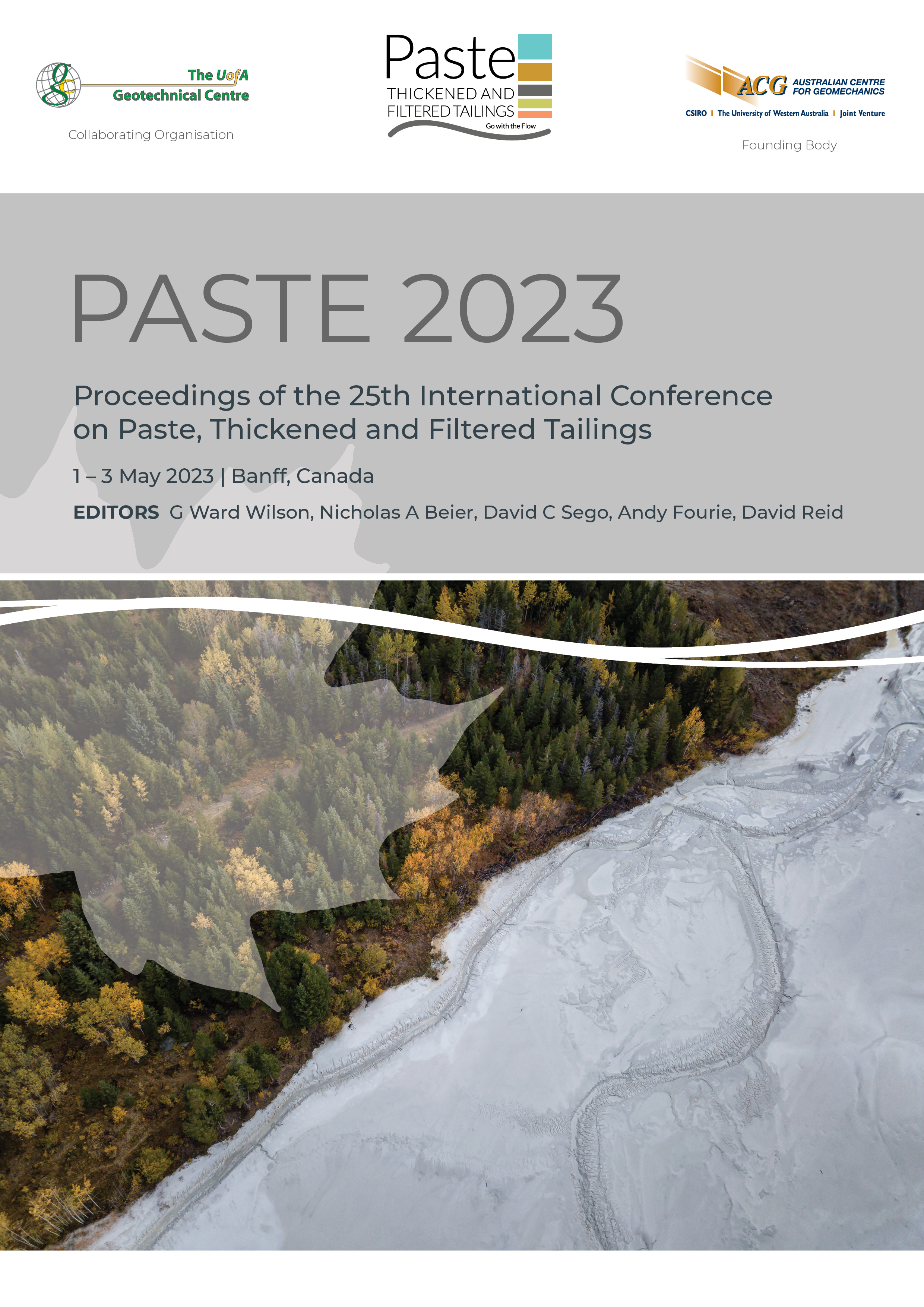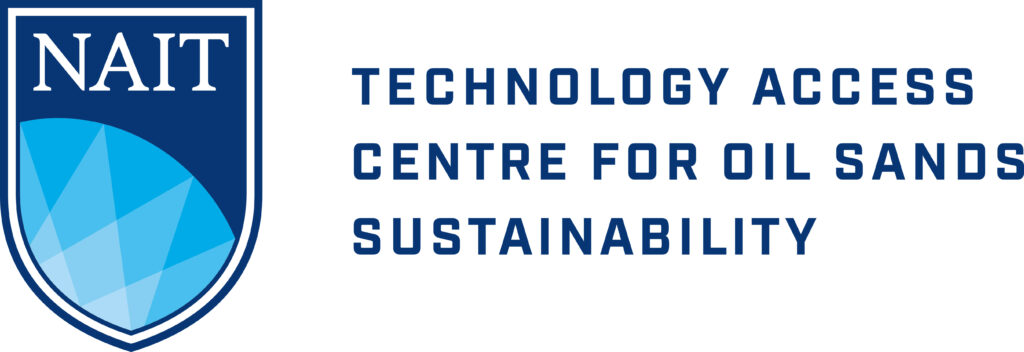Developing predictive empirical filtration models for advanced tailings handling

|
Authors: Nupehewa, J; Palmer, J; Suvio, P; Koponen, V; Safonov, D |
DOI https://doi.org/10.36487/ACG_repo/2355_25
Cite As:
Nupehewa, J, Palmer, J, Suvio, P, Koponen, V & Safonov, D 2023, 'Developing predictive empirical filtration models for advanced tailings handling', in GW Wilson, NA Beier, DC Sego, AB Fourie & D Reid (eds), Paste 2023: Proceedings of the 25th International Conference on Paste, Thickened and Filtered Tailings, Australian Centre for Geomechanics, Perth, pp. 324-338, https://doi.org/10.36487/ACG_repo/2355_25
Abstract:
There has been a significant improvement in tailings dewatering techniques over recent years. However, the effects of tailings properties on the filtration process have not been vastly investigated. The different properties of tailings cause significant effects on the feasibility of filtration. Modifying or optimising filtration equipment for different tailings mixtures often requires testing procedures that involve high expenses. Therefore, an increasing demand has arisen to improve the prediction of tailings properties for efficient thickening and filtration using the available mineralogy and particle size data. Developing a suitable solution to do so is the focus of this paper. Experimental studying of tailings and their fractions helps to understand the empirical relationship of the physical properties of tailings, such as particle size distribution (PSD) and air permeability, to the filterability properties like average cake porosity and cake resistance. Also, it is vital to study how the changes of fine particle concentration affect these parameters of the tailings mixture. An algorithm developed based on the filterability of different particle size fractions of chosen minerals should be able to predict the filtration rate for a user-defined tailings blend. This type of model will be useful in evaluating the performance and economics of different tailings treatment models and studying the feasibility to produce tailings disposal solutions. It was discovered that separating fine fractions from tailings, significantly improves the filterability of the remaining portion. This opens up several further possibilities for advanced tailings handling systems. One possibility is to perform cost-efficient tailings filtration for the coarser fractions of the tailings and keep the fine fractions as slurry, which then mix with the filtration cake to form paste for surface disposal or backfill. This approach potentially allows mining companies to achieve paste rheology at lower opex and capex compared to the conventional paste thickener technology. During the study a set of laboratory experiments were conducted to fraction the tailings and determine the empirical relationships between the physical and filterability properties of each fraction and their different mixtures. Development of a filterability parameter prediction model with the PSD data and known parameters of original tailings fractions allows the possibility of predicting new, untested materials. The accuracy of the predictions depends on the degree of similarity between the new material and the original tailings material used for empirical study in this stage. By inputting the filterability parameters, suspension properties and operation conditions, the developed filtration models are able to predict the filtration process parameters such as total filtration time, final filtration volume and final cake thickness, etc. The outcome of a validated predictive filtration model can be utilised to trade-off between filtered, thickened, paste and combined treatment of tailings by modifying the tailings feed.
Keywords: tailings filtration, tailings dewatering, particle size distribution, tailings fractioning, filterability properties, predictive empirical filtration models, advanced tailings handling
References:
ASTM International 2018, Standard Test Methods for Fineness of Hydraulic Cement by Air-Permeability apparatus (ASTM C204-18), ASTM International, West Conshohocken.
Bista, S 2022, Tailings dewatering: Thickening Followed by Filtration, MSc thesis, Lappeenranta–Lahti university of Technology, Lappeenranta.
MARC Technologies Pty Ltd 2014, Cyclosizer Operation & Maintenance Manual CYCLOSIZERMODEL M16, Operation and Maintenance Manual, MARC Technologies Pty Ltd, Perth.
Davies, M 2011, ‘Filtered dry stacked tailings – the fundamentals’, paper presented Tailings and Mine Waste 2011, Vancouver, November 6–9 2011,
Davies, M, Lup, J, Martin, T, McRoberts, E, Musse, M & Ritchie, ‘Dewatered tailings practice – Trends and observaions’, Tailings and Mine Waste 2010, CRC Press, London.
Eberhart, RC & Kennedy, JA 1995, ‘New optimizer using particle swarm theory’, Proceedings of the Sixth International Symposium on Micro Machine and Human Science, IEEE Service Center, Piscataway, pp. 39–43.
Grabowski, W & Wilanowicz, J 2010, ‘Assessment of methods of testing specific surface of mineral dusts’, Proceedings of the 10th International Conference on Modern Building Materials, Structures and Techniques, in P Vainiunas & E Kazimieras Zavadskas (eds), Technika, Vilnius, pp. 93–98.
Huhtanen, M, Salmimies, R, Safonov, D, Palmer, J, Ekberg, B, Kraslawski, A & Häkkinen, A 2013, ‘Blaine index measurements for predicting the filtration properties of different solids’, Proceedings of Filtech.
Hunger, M & Brouwers, HJH 2009, ‘Flow analysis of water-powder mixtures: application to specific surface area and shape factor’, Cement and Concrete Composites, vol. 31, no. 1, pp. 39–59,
Malvern Instruments Ltd 2013, Mastersizer 3000 User Manual, issue 2.1, Malvern Instruments Ltd, Worcestershire.
Palmer, J, Safonov, D, Hakkinen, A, Ekberg, B & Kraslawski, A 2010, ‘Trends in test filtration to respond to decreasing sample size’, Proceedings of the XXV International Mineral Processing Congress, Australasian Institute of Mining and Metallurgy, Carlton.
Safonov, D, Kinnarinen, T & Häkkinen, A 2021, ‘An assessment of Blaine’s air permeability method to predict the filtration properties of iron ore concentrates’, Minerals Engineering Journal, vol. 160,
Sartorius AG Company 1999, Manual of Weighting Applications, Part 1: Density.
Vargas, C & Pérez Campomanes, G 2022, ‘Practical Experience of Filtered Tailings Technology in Chile and Peru: An Environmentally Friendly Solution’, Minerals, vol. 12, no. 7,
Wakeman, RJ & Tarleton, ES 2005, Solid/Liquid Separation: Principles of Industrial Filtration, 1st edn, Elsevier Advanced Technology, Oxford.
© Copyright 2026, Australian Centre for Geomechanics (ACG), The University of Western Australia. All rights reserved.
View copyright/legal information
Please direct any queries or error reports to repository-acg@uwa.edu.au
View copyright/legal information
Please direct any queries or error reports to repository-acg@uwa.edu.au



